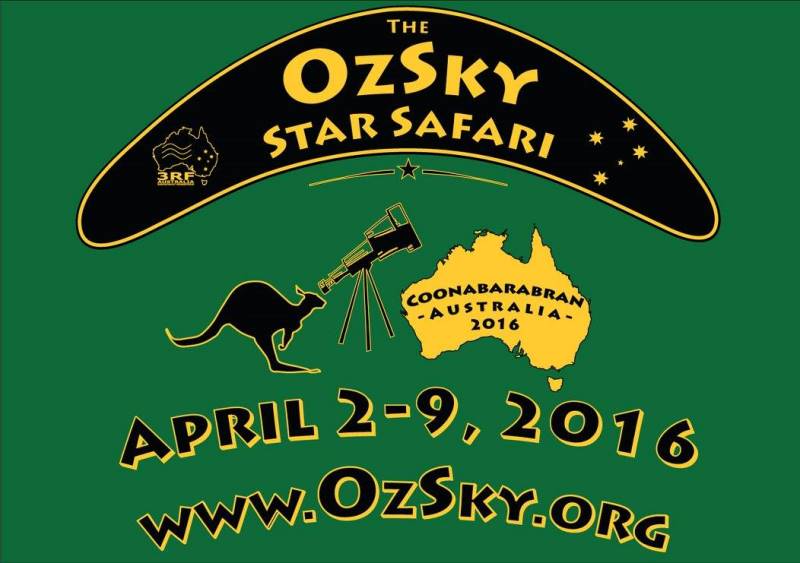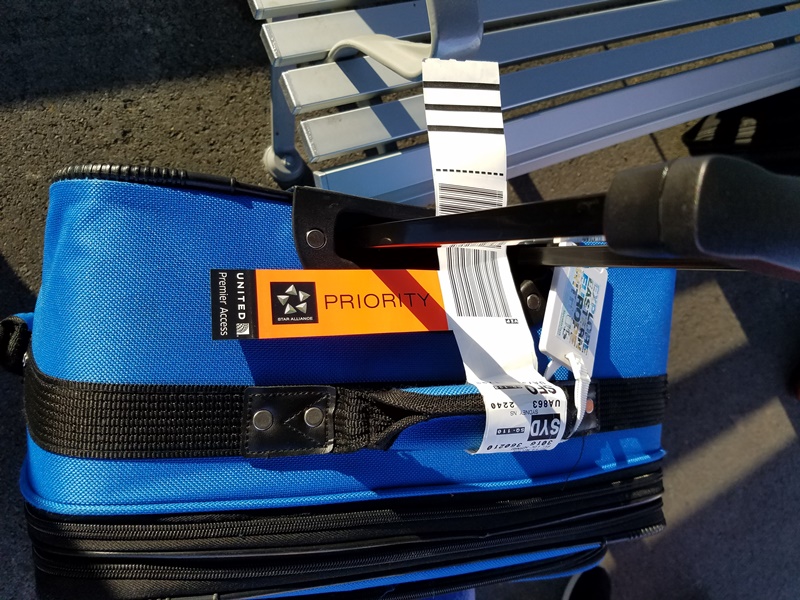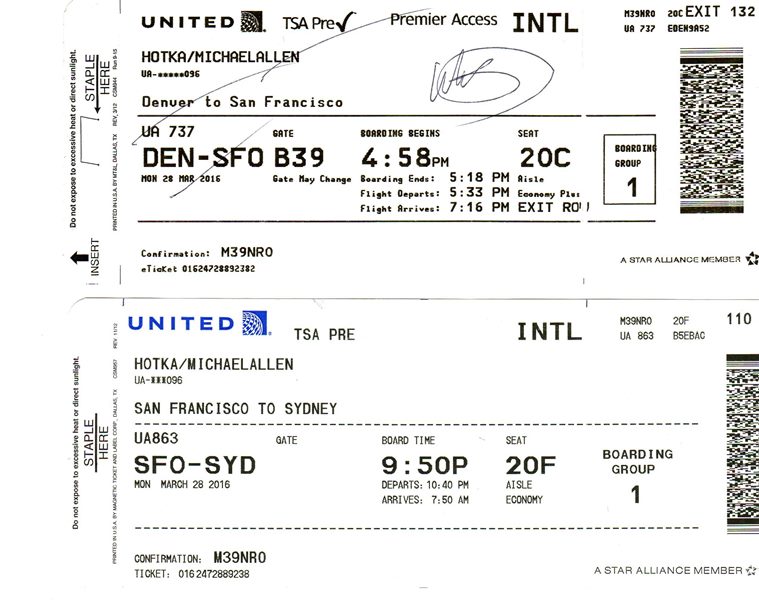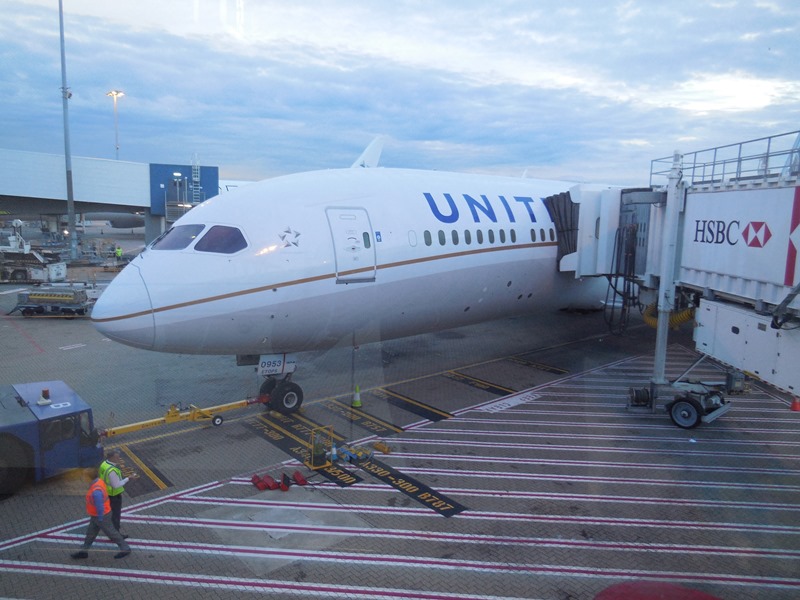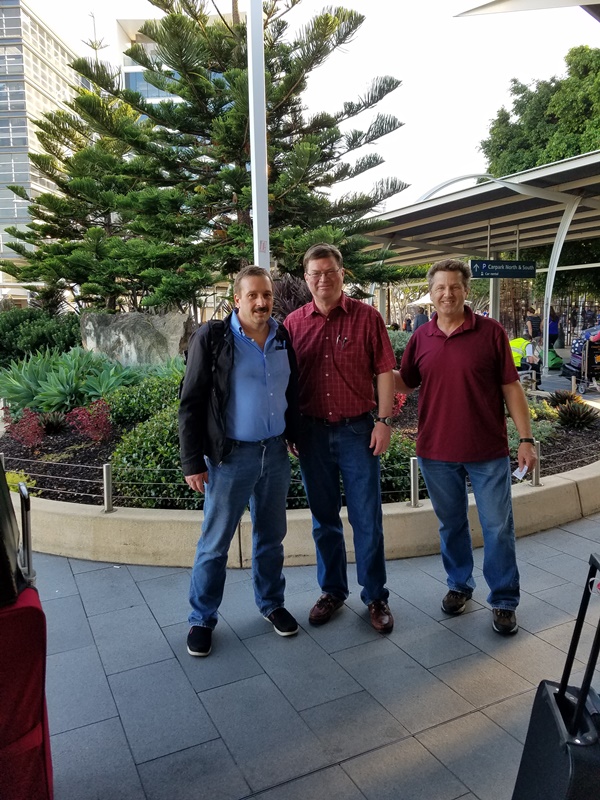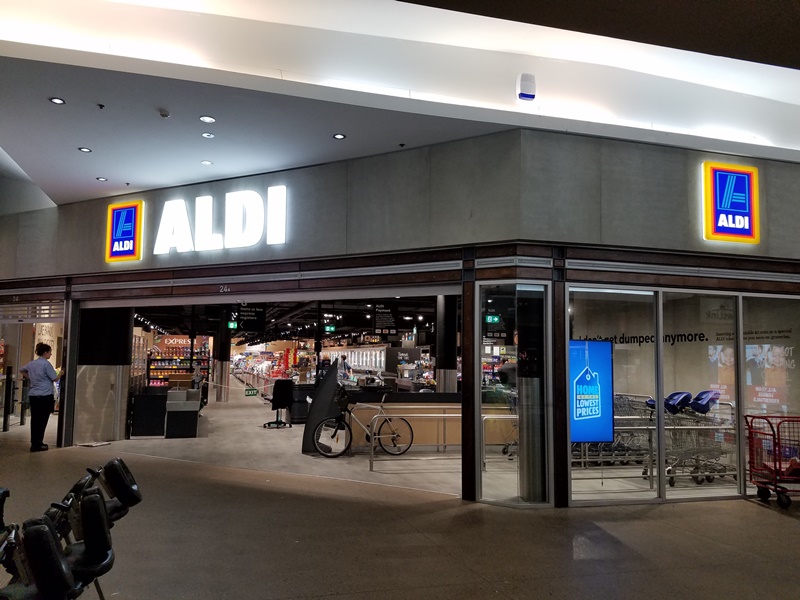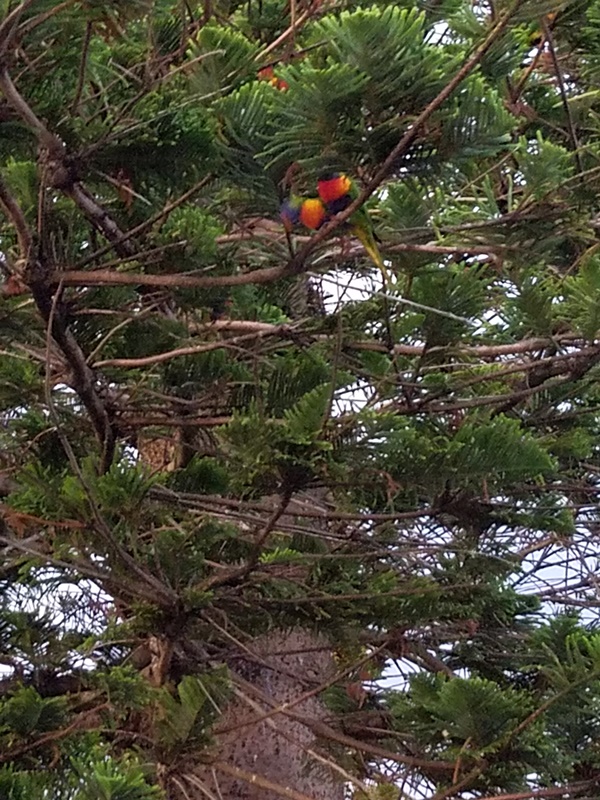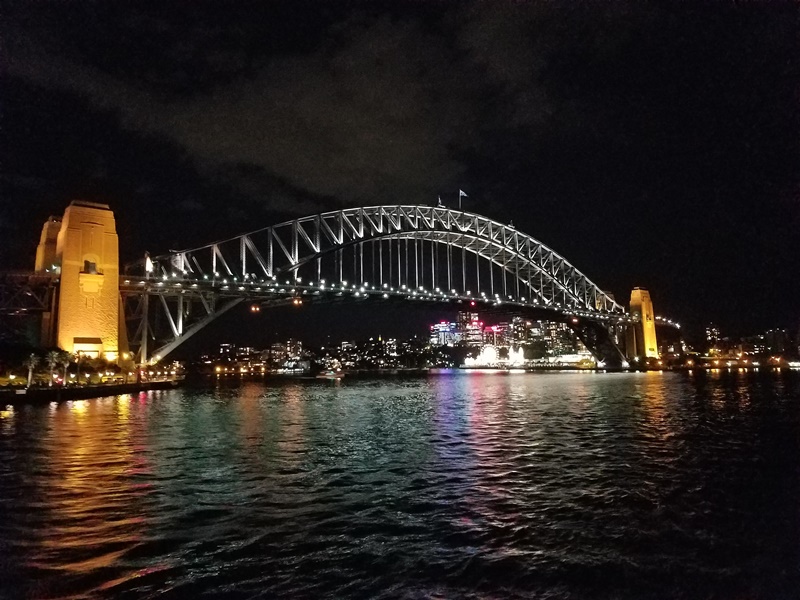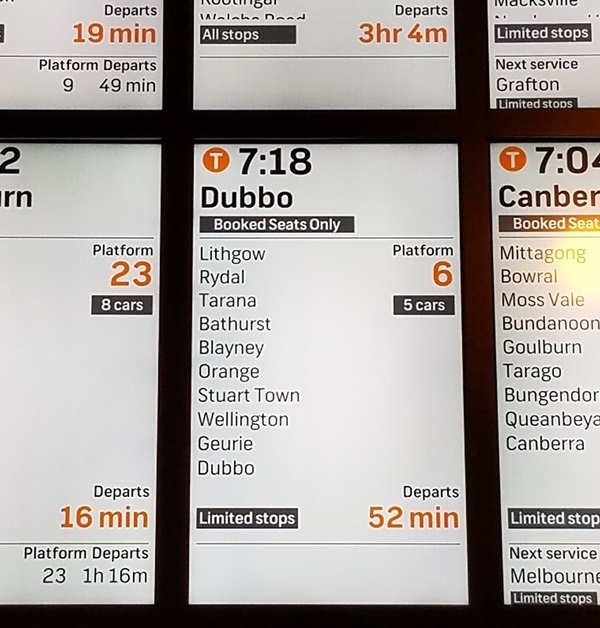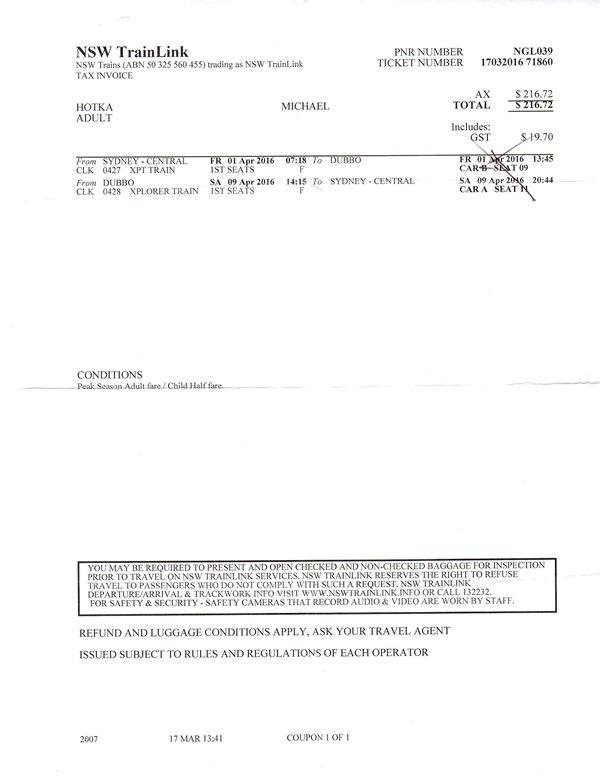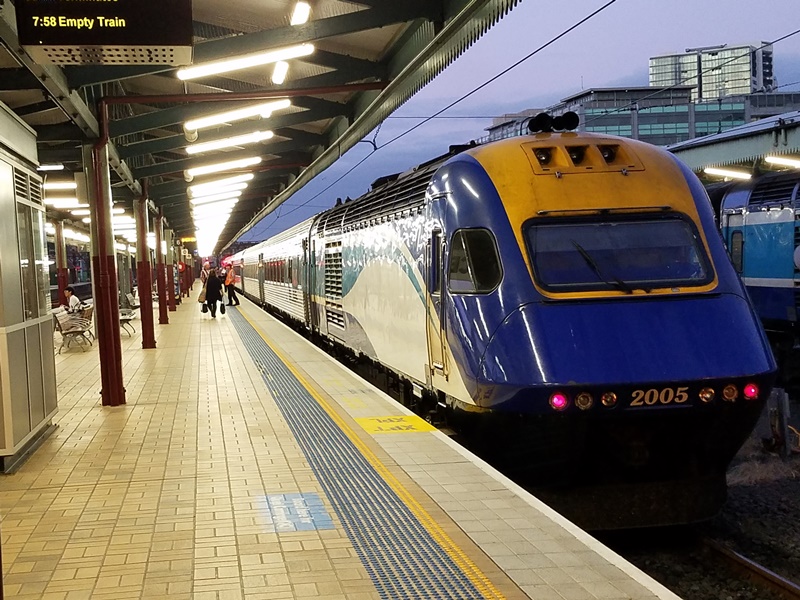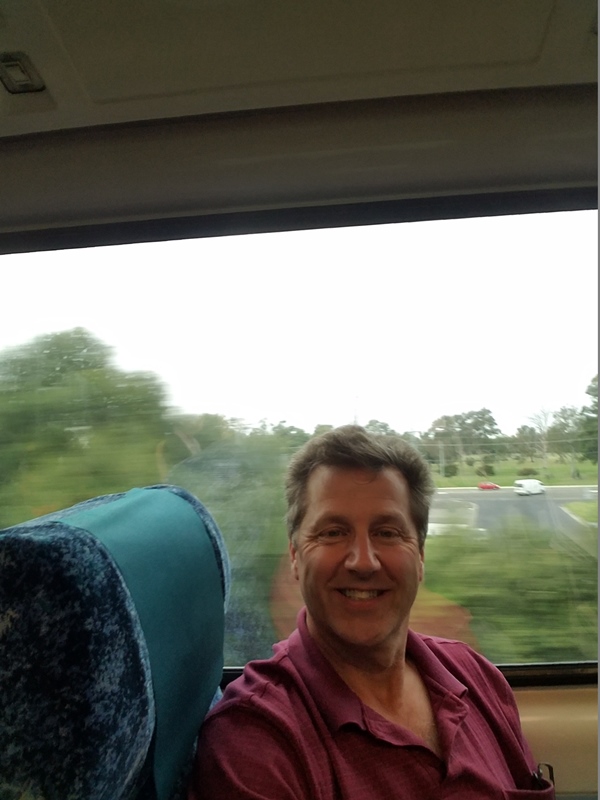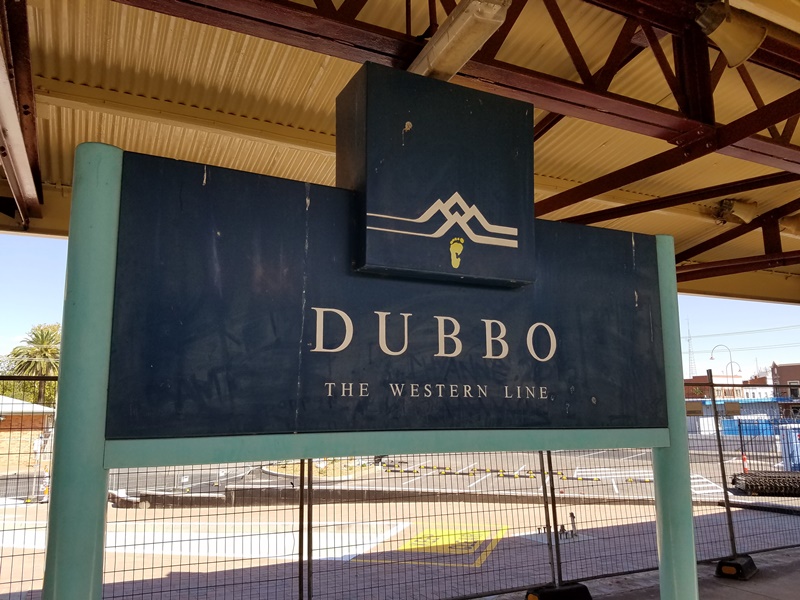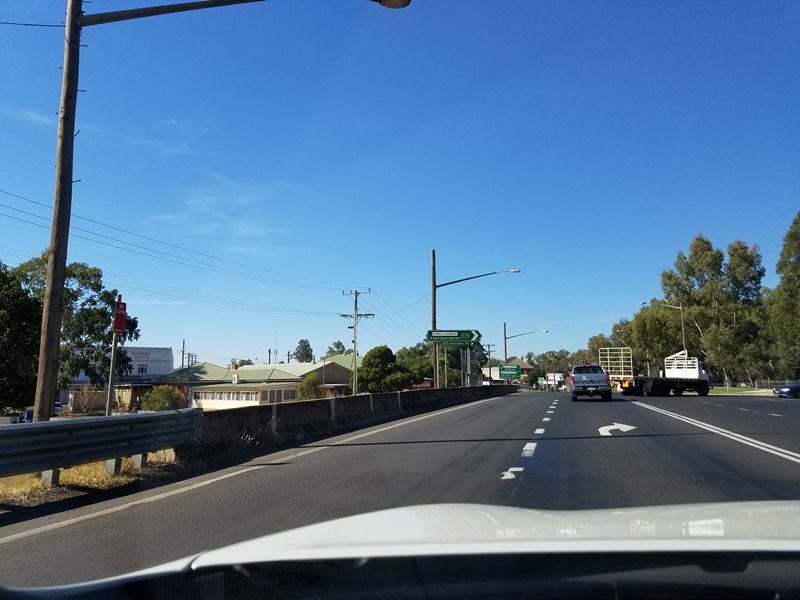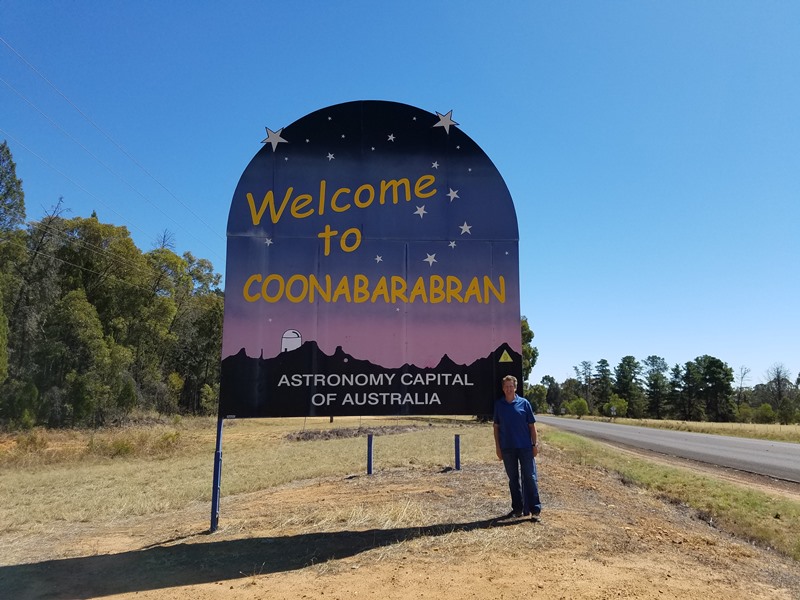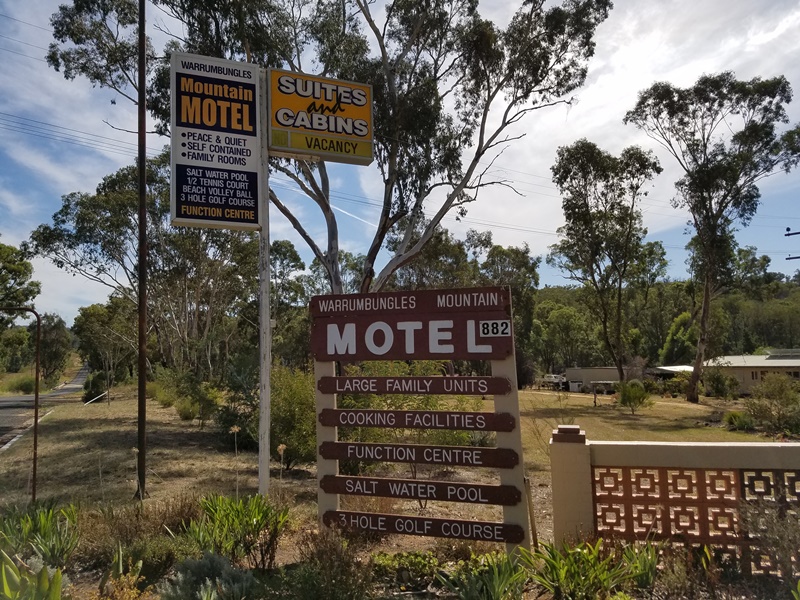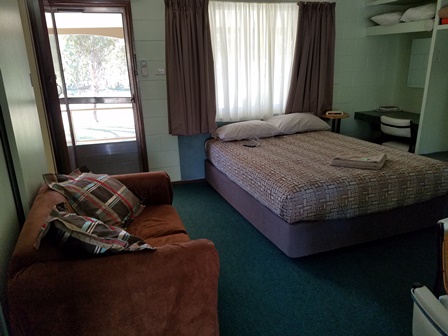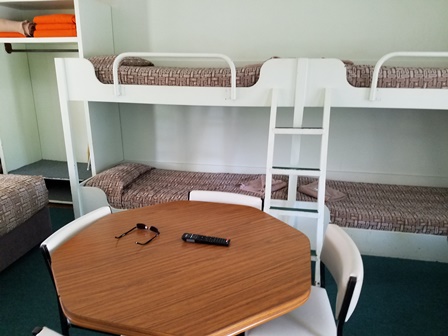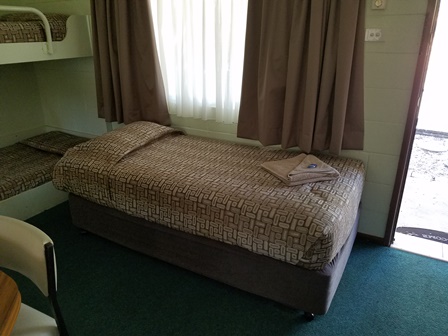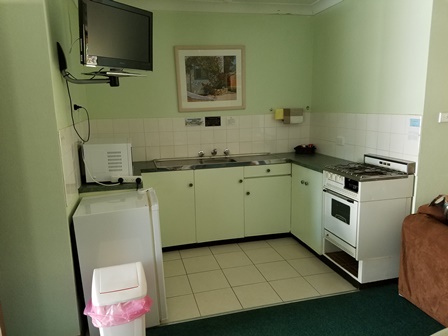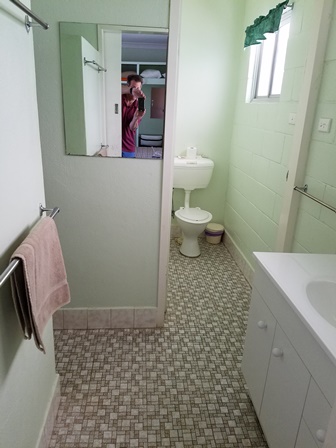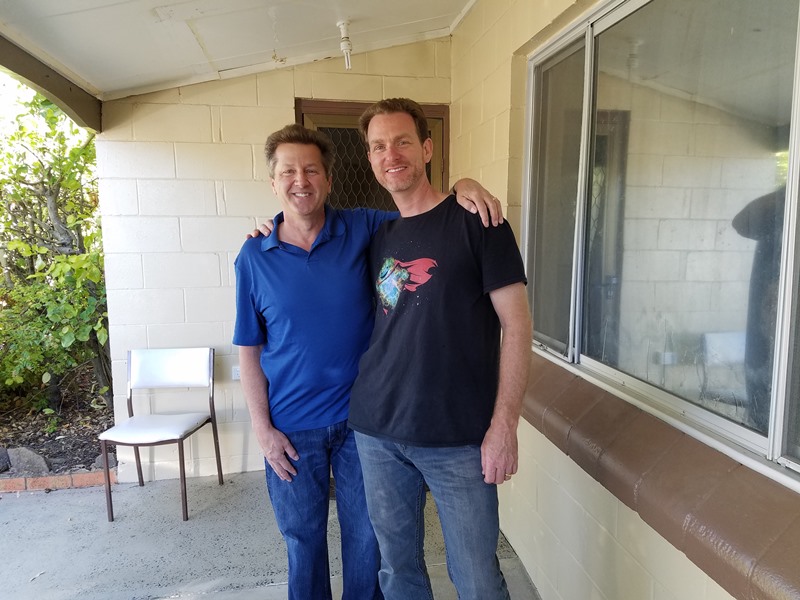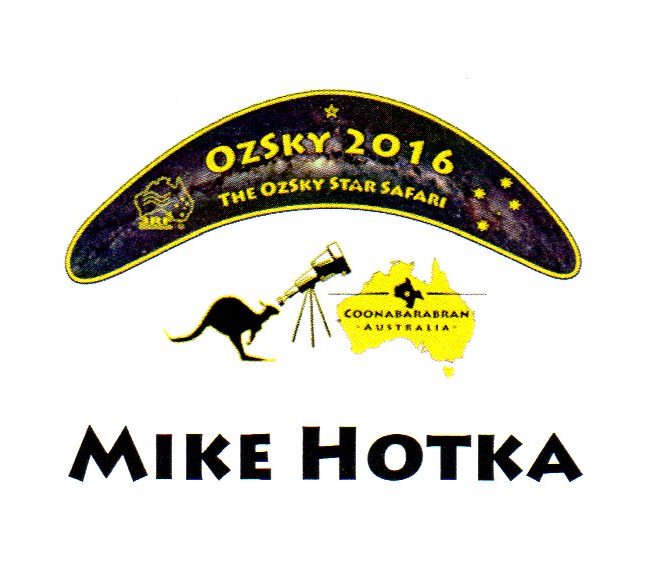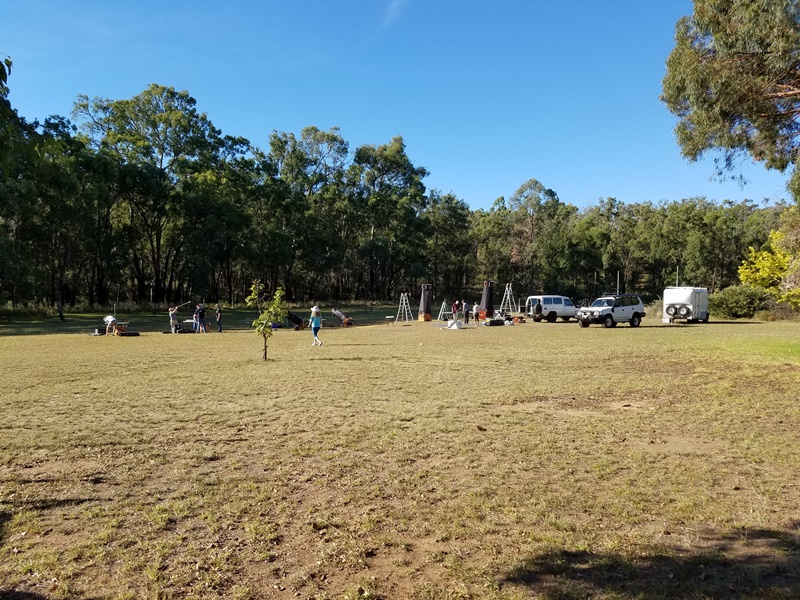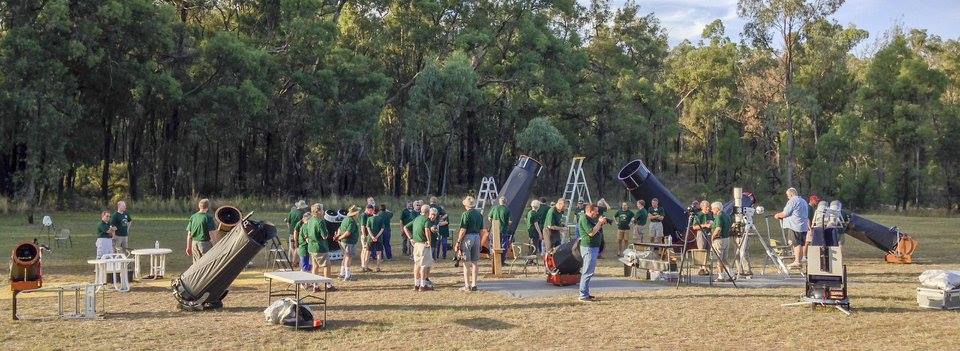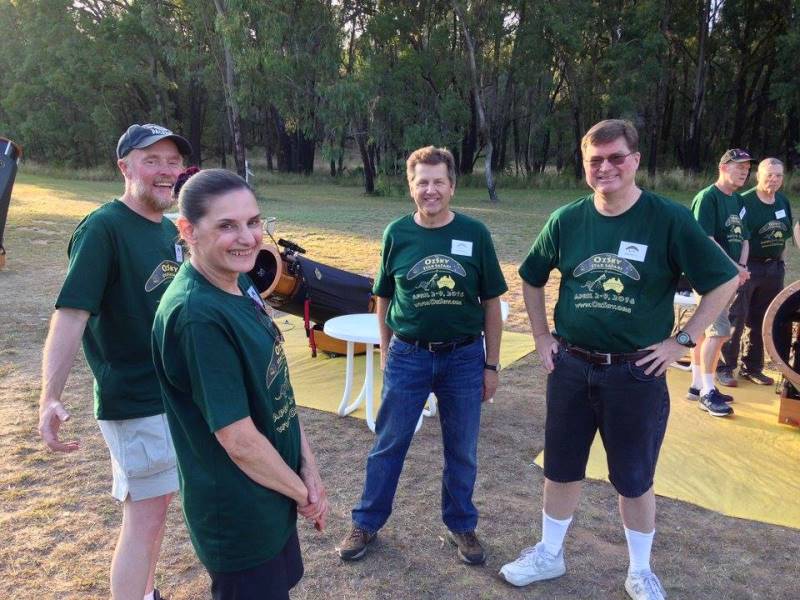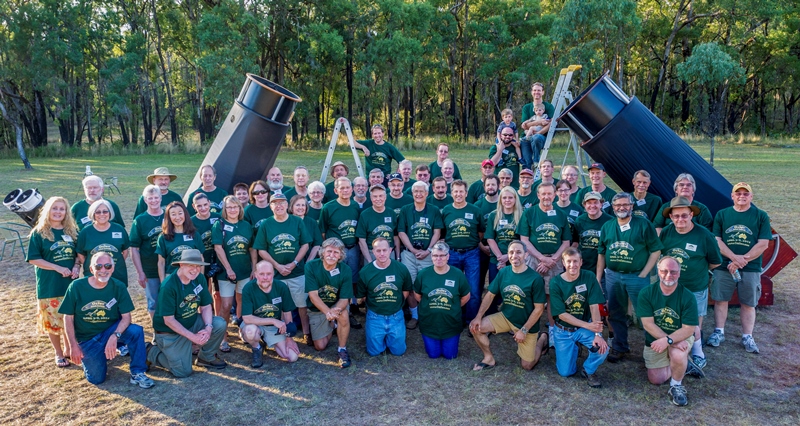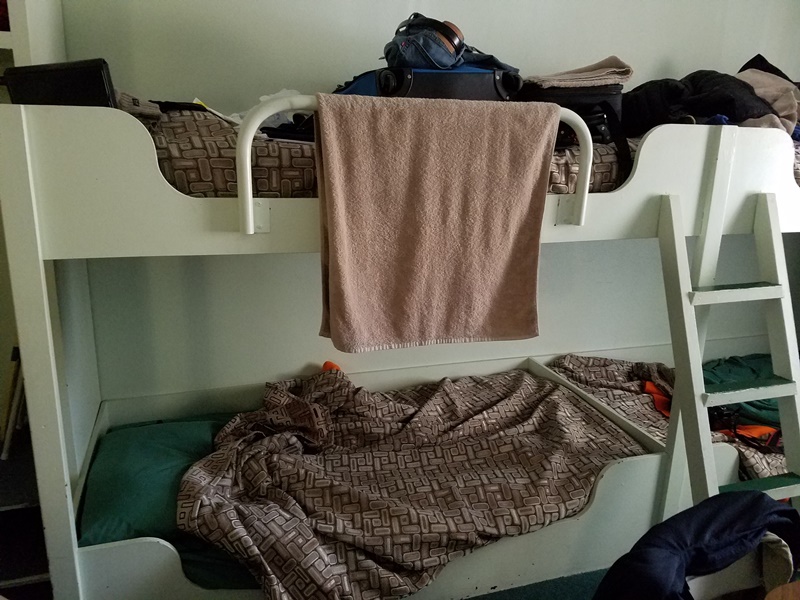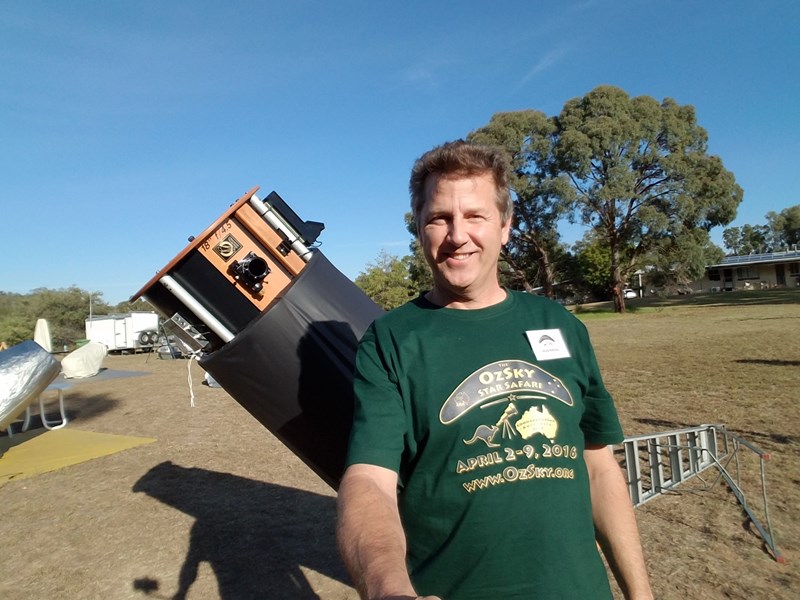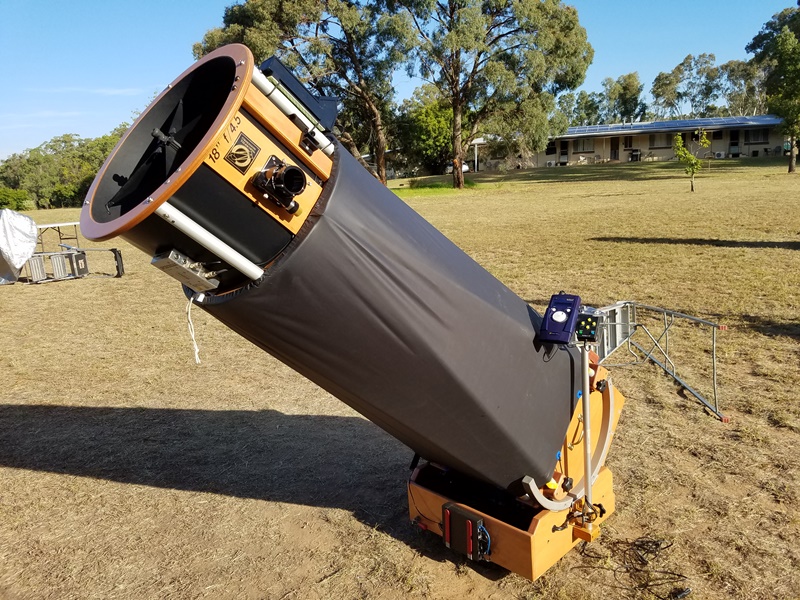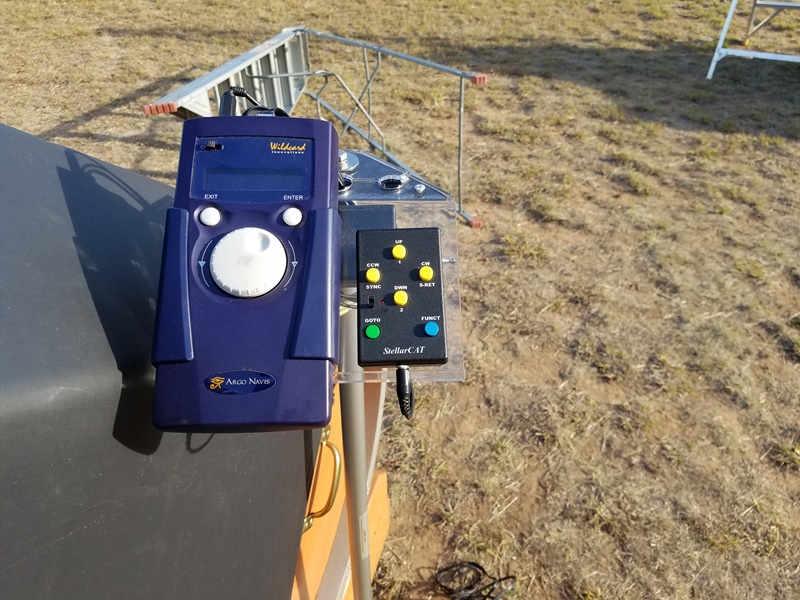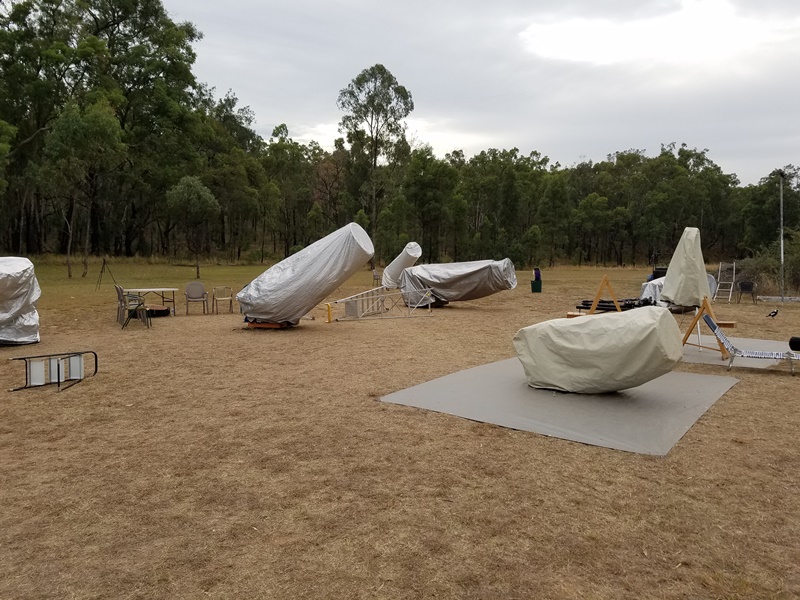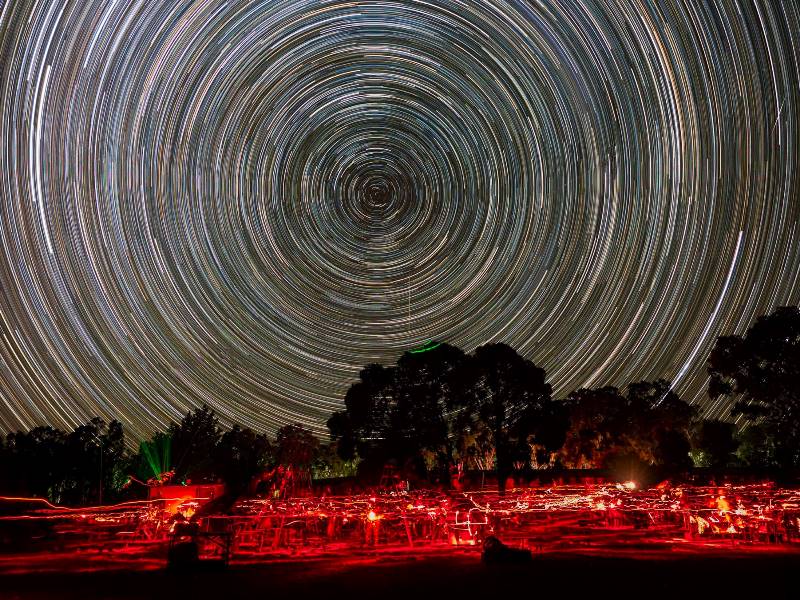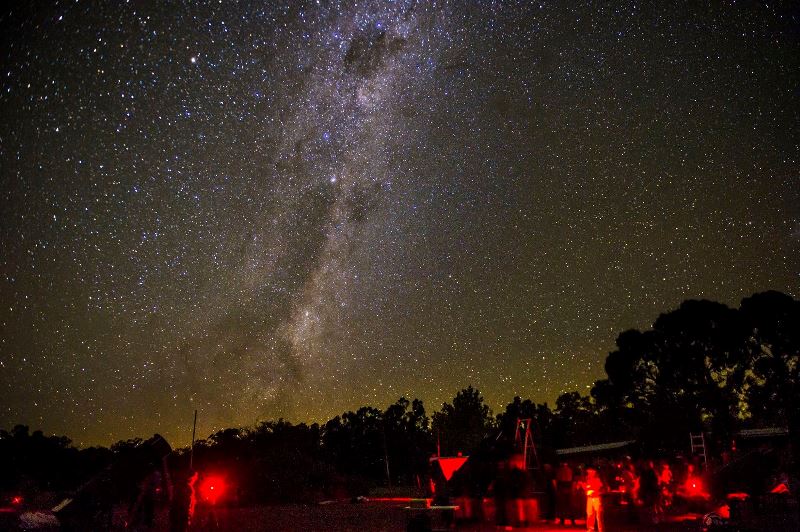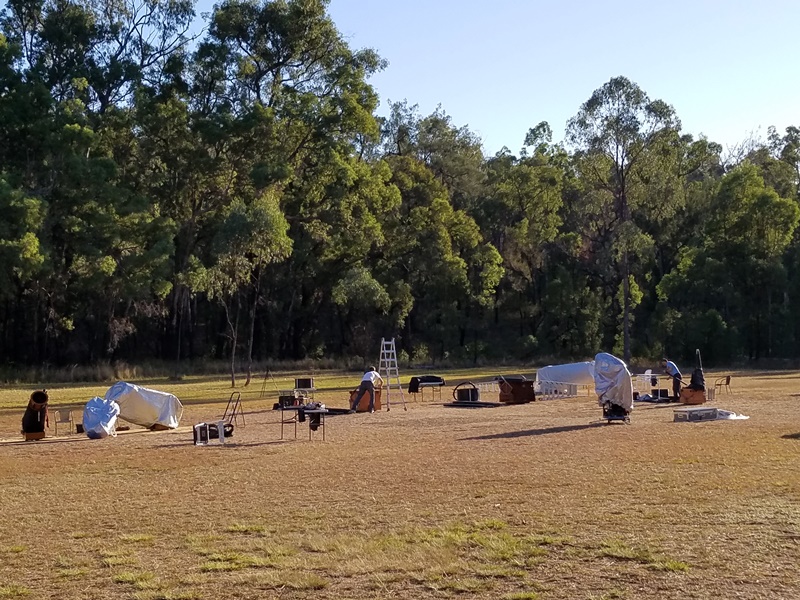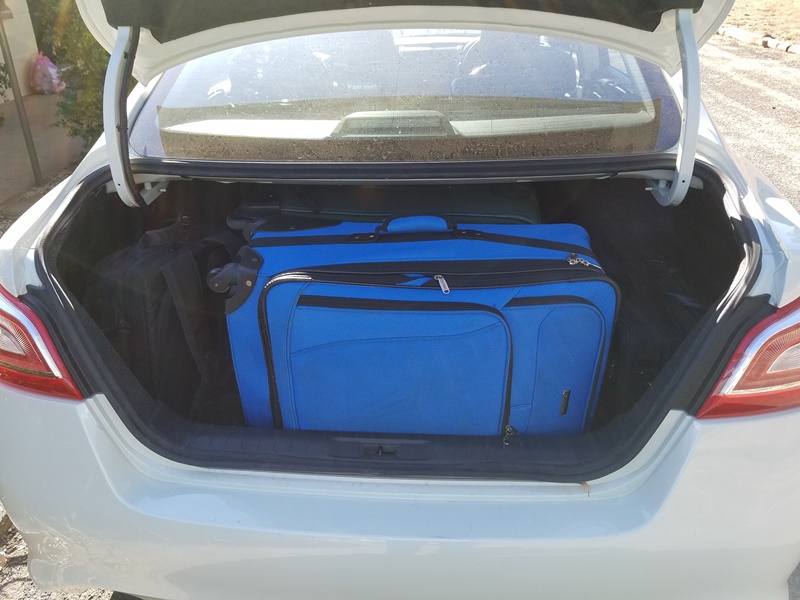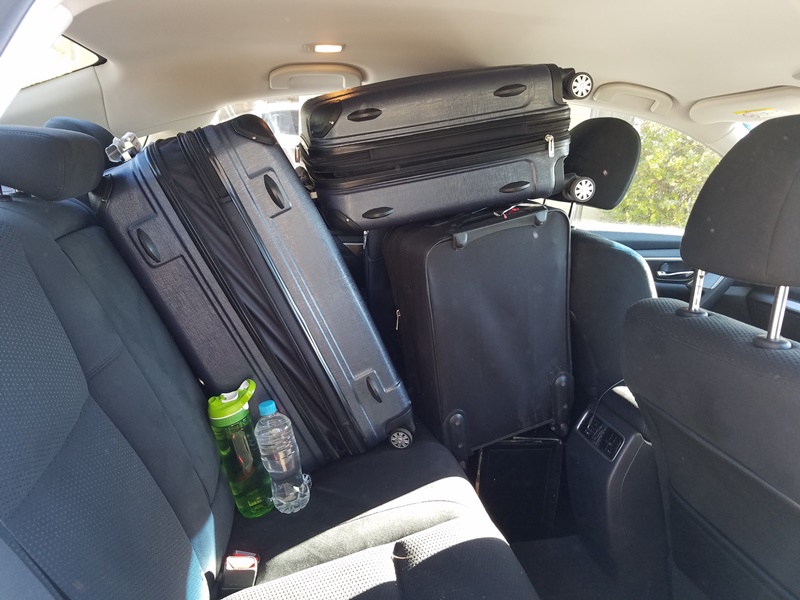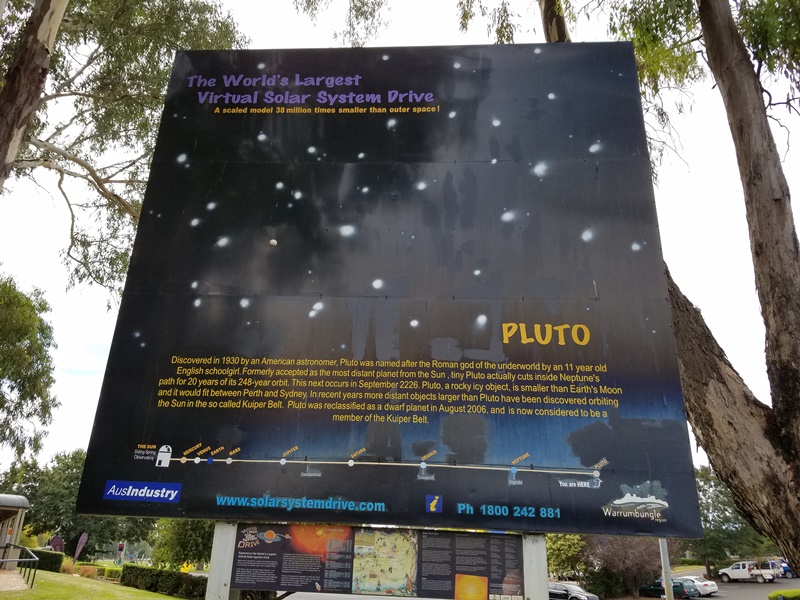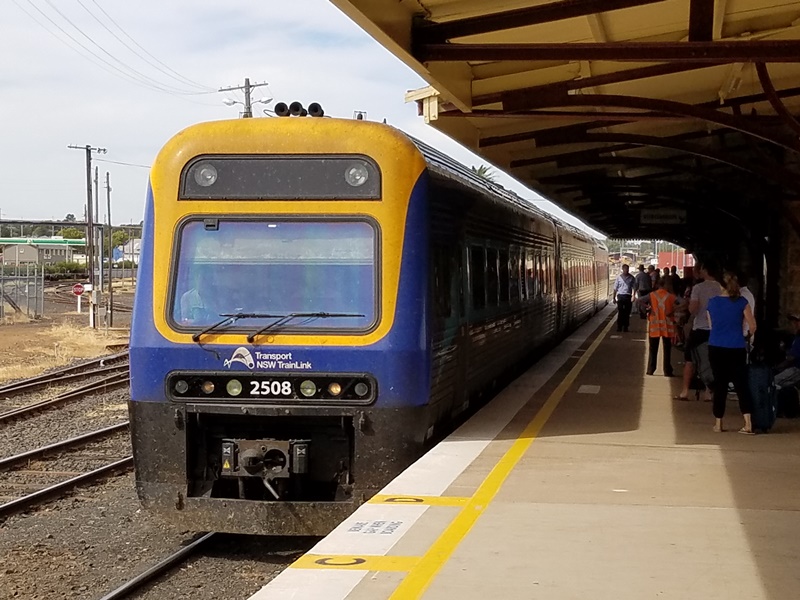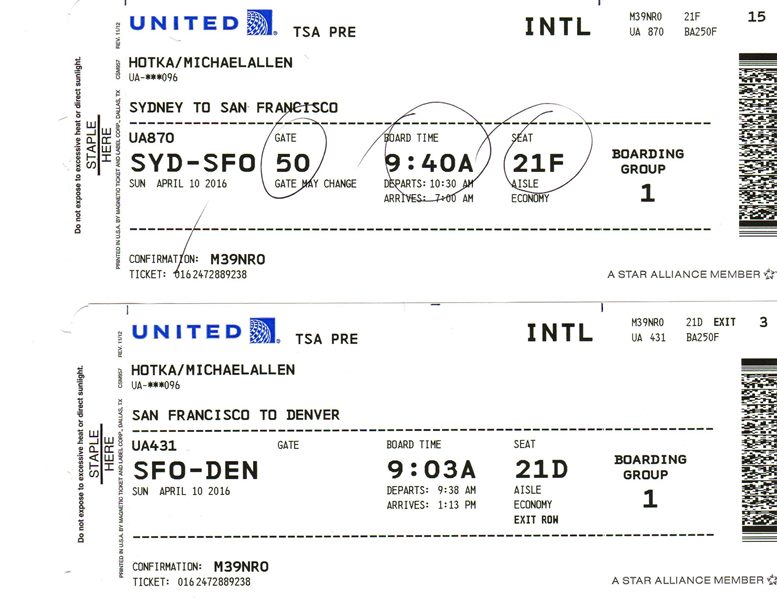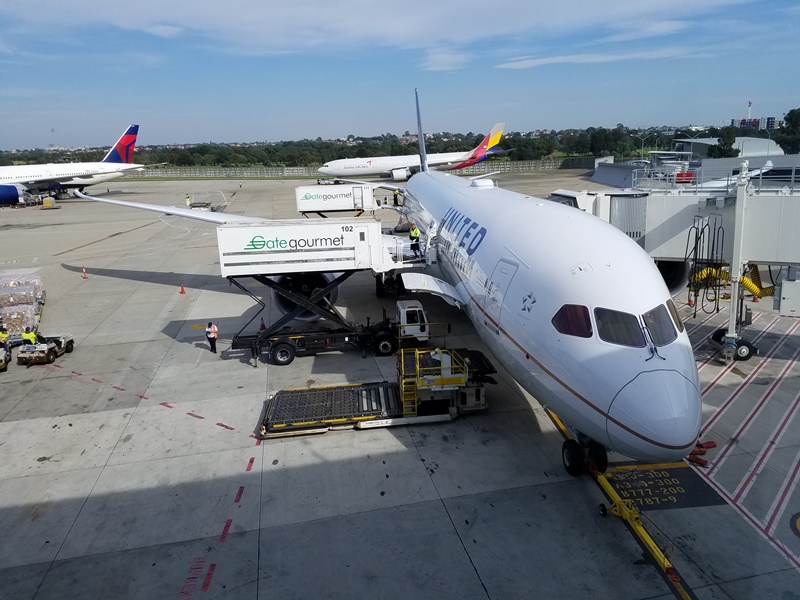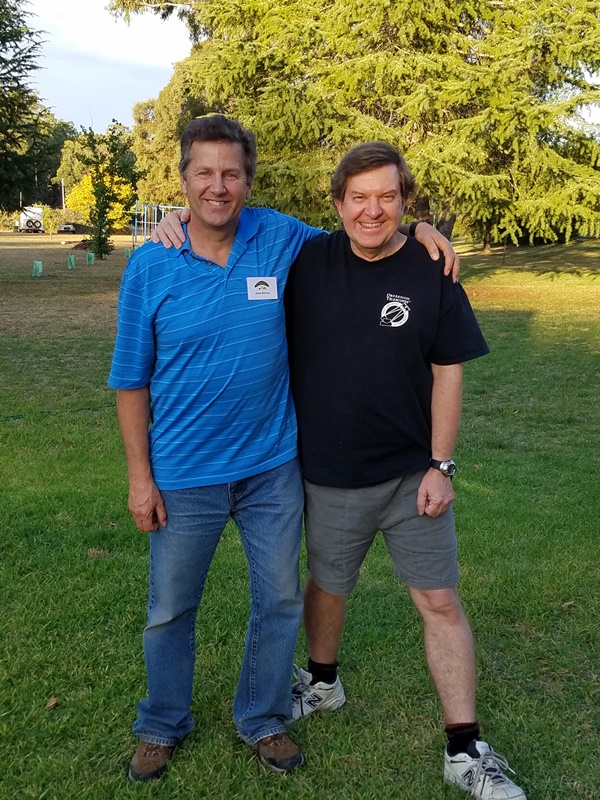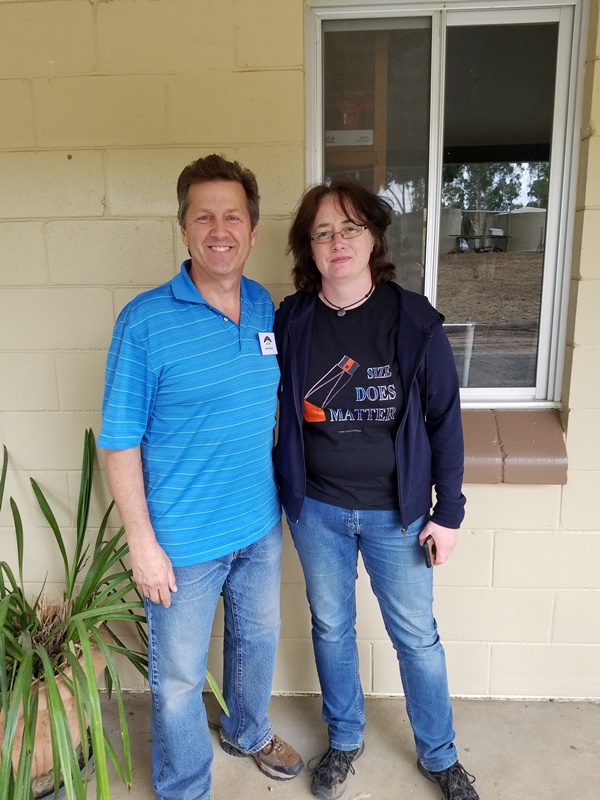Thoughts about my trip to Australia, March 28 thru April 10, 2016 to view the southern sky thru telescopes.
My trip started back in the fall of 2009, when my friend, Mike Roos, had recently returned from his first trip to OzSky and marveled at what an adventure it was. I have been wanting to go year after year, and this year, Barbara said why don't you just go. I did not hesitate to register when I received notification of the OzSky 2016 event. I was the 3rd person to register on April 27, 2015 and I was set to go. I also received on site accomodiations, which made it an easy walk from the observing field to my bed at the end of a night of observing.
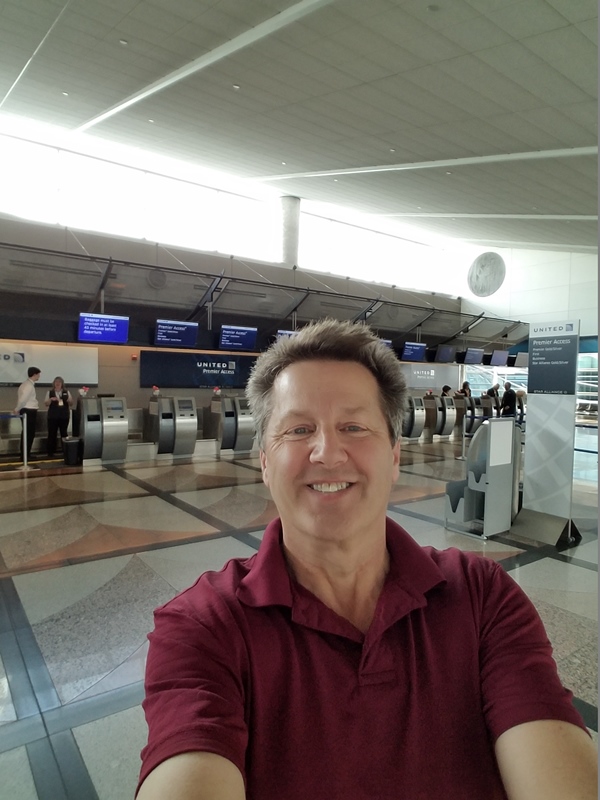
This is about 3:10 PM, Monday March 28, 2016, near the United ticket counter at the Denver International Airport. I am waiting for my friend Greg Halac to arrive, for he is a United Premier member and gets to take a guest with him. The guest gets all the perks of his membership, which includes extra baggage weight, extra leg room and boarding in the first group.
Our bags were tagged special so as to make it thru to Sydney, no matter what. Another perk of a United Premier member.
I've NEVER boarded an airplane in Group 1. Made me feel like a VIP, as if I needed anything extra to boost my spirits for I was already headed to Australia to observe through a telescope.
In the waiting area, I took this picture of our plane we would take from San Francisco to Sydney.
We flew from Denver to San Francisco's airport first. Another United Premier benefit I got enjoy was visiting the United lounges in all the airports. Free WiFi, food and drinks.
Then onto Sydney, where we arrived about 6:45 AM, Wednesday March 30, 2016. About 20 hours after we left Denver, Colorado. And we left Tuesday somewhere over the South Pacific.
Here are the 3 of us, Mike Roos on my far right and Greg Halac next to me, outside the Sydney airport, headed to the shuttle pickup area. We look pretty good for traveling so long on an airplane.
Wednesday afternoon, Mike and I took a ferry to Manly Bay, to sit on the beach and get familiar with the southern sky after it got dark. But clouds there prevented us from doing that.
My Dad shops at an Aldi Food store in Iowa City, IA. Here was one in Manly Bay.
We had delicious fish and chips for dinner, saw a beautiful rainbow out the window of the restaurant and just hung around Manly Bay, hoping it might clear. Near sunset, a tree was full of wild parrots. Beautiful, brightly colored birds that made a lot of noise until it was completely dark. Then not a peep.
On the way back to Sydney and our hotel, the clouds started to break up and I got my first look at the Southern Cross and Canopus, two things I've seen in pictures, but never actually saw in person, until then.
As we rounded the harbor and headed into the dock, we passed the Sydney bridge, the one they shoot fireworks off of at midnight on New Year's Day.

and the Sydney Opera House. Very pretty at night.
The next day, Mike and I took a different ferry to the Taronga Zoo. Here are a couple of pictures I took of a Tasmanian Devil. Contrary to what we were lead to believe, it does NOT move about it's cage in a tornado type of vortex.
Early Friday morning, April 1, 2016, we headed to the Sydney Central train station, to catch our train to Dubbo, NSW. The next leg of our journey to OzSky.
My round trip train ticket to get me to Dubbo, NSW and back.
About 7 AM we boarded an express train from Sydney Central Station, to Dubbo, NSW. The train station was just across the street from our hotel, which made moving our luggage very easy.
It was a very cool, 6 hour train ride as we passed thru the Australian countryside,
arriving in Dubbo ON TIME. I was impressed.
We rented a car and drove 2 hours, on the wrong side of the road, to Coonabarabran, NSW to where the OzSky Star Party was being held nearby. Here we need to turn right to proceed further.
As you enter Coonabarabran, you are greeted by this marvelous sign. A few miles on the other side of town is one of Australia's premier research observatories, the Siding Springs Observatory.
About 5 miles outside of town, we came to the site of the star party.
The Warrumbungles Mountain Motel is the site of the star party. We stayed in room #3. The room was nice.
Mike, Greg and I shared this room with a 4th, Alan Whitman, from British Columbia, Canada. This arrangement worked out well for the 4 of us wanted to observe all night, sleep all morning and nap in the afternoon, which we did. AND the shower was nice. Lots of hot water available.
This is Lachlan MacDonald. He is the heart and soul of the OzSky star party. After being Facebook friends with him and exchanging many emails about this trip, I finally met him.
There was a Meet and Greet dinner on the evening of Thursday March 31, 2016, where I got to meet all our fellow star party attendees that were in town on that date. Many people showed up. Lachlan's wife Annette sat down across the table from me and it seemed like I already knew who she was. Then it hit me that I had seen her in many of Lachlan's Facebook picture posts. That is why she looked so familiar.
I received a nice OzSky 2016 T-Shirt and this name badge, so I could be identified by others.
Just outside the back door of our room was the observing field. This is Friday afternoon, where the volunteers are setting up the telescopes we will use for the event.
The attendees are gathering around the telescopes, inspecting what is available to use.
We are meeting everyone, waiting for the time when the group picture will be taken.
Then we all posed for a group photo. This image was provided by OzSky 2016 and if you click onthe image, you will see a larger image where you can see all our happy faces.
Dinner was provided Friday night, April 1. It was dark so I left the group and headed out to get my first look at the dark, clear southern sky. This is what I was treated to. My first look at the Coalsack Nebulae, and the Large and Small Magellanic Clouds. I grabbed my binoculars and just panned up and down the southern Milky Way, taking in all the glowing knots of gas and star clusters. This image was taken by Roger Dillion, of Lumberton TX, and gives an idea of what I saw.
Much later in the evening, this picture by Roger Dillion of Lumberton, TX shows the southern Milky Way in all it's splendor. The dark lanes in the glow of the Mikly Way form the head and body of a bird, which the locals call this an Emu.
This was my bunk. I slept on the lower bunk and kept all my stuff on the upper bunk. It worked out well.
I brought my selfie stick, so I thought I'd put it to good use. This is the 18" f/4.5 Newtonian telescope I mostly used throughout the week.
With Mike's 13mm Ethos eyepiece, giving a 100 degree apparent field of view, the views of galaxies and nebulae were just stunning. With the ParCorr corrector, we often were viewing objects at 187 power.
I prepared lists of objects I wanted to see. I slewed the scope all over the place night after night. Every night started out clear with 3 nights being cut short by clouds. The rest of the nights I observed until either the moon rose early in the morning, or morning twilight was starting. That extra light in the sky kept me from seeing anything else.
I was usually one of the first on the observing field and always one of the last to leave. Since the Australian night time is basically my day time back home, I was able to stay up all night and never felt tired and wanted to call it quits before the moon light or sunrise forced me to quit.
All during the week, I kept pinching myself, for all of this felt like a dream. I was observing in Australia, seeing objects I had previously seen only in pictures. During the week, I acquired a new, all time favorite deep sky object, and that is something called NGC 104 or 47 Tuc. It is the most magnificate globular cluster I have ever seen. And I have now seen almost all the globular clusters in our galaxy.
When I finally entered all the objects I observed into my Deepsky Astronomy Database, it told me I had seen 380 new objects I had never seen before. Of the ones I had seen, some were truely impressive, for back home, they are just above the horizon and hard to see. Here, they were overhead and showed much detail. Like M83, a round glow from home. In Australia, you can see counter clockwise spiral arms on this galaxy.
The other thing that was unique to observing in Australia is that of the constellations I recognized from back home, they were upside down, which messes with your mind. Back home, Scorpius is just above the southern horizon. In Australia, it is straight overhead at 3 AM in the morning, another mind blowing vision.
Each scope was equipped with an Argo Navis (blue box) finding system. Once the telescope was aligned properly, you just dial in an object you want to see, and the Argo Navis will tell you how to move (push or pull) the scope to put the object in the eyepiece.
I learned the details of operating the Argo Navis and was impressed with it's extensive database. So I purchased one from my friend Gary Kopff, who with his wife, designs and updates this product.
The black box with the yellow, green and blue buttons is part of an automatic motor slewing system that if it were engaged, would move the scope to the coordinates specificed by the Argo Navis with one push of a button. Due to the ability for this to easily be be damaged, it was disabled for this star party.
This is Friday morning April 8, 2016. The weather forecast was indicating that these clouds would persist for the rest of the star party. But by late afternoon, they cleared off and for 2 hours the last night of the star party, we got to observe.
Andrew Murrell is a very good photographer and a good baritone singer. He took several images throughout the week. This is a time lapse image he took, looking at the south celestial pole. It appears he left the shutter open for several hours. The red lights are us, the sky gazers with our red lights moving here and there in the dark while Andrew's shutter was open. Red lights help preserve our dark adapted eyes. The telescope I used, and my red light, are on the right hand side of this picture.
Another one of Andrew Murrell's images where he caught the southern Milky Way and the Emu.
As is with everything in life, all good things must come to an end. This is Saturday, April 9, 2016. Lachlan and David (a volunteer) are breaking down the scopes, getting ready to leave. We are in our room packing up our items, for we need to leave by 9 AM to drive back to Dubbo, NSW to catch the 2:15 PM train to Sydney.
We packed our suitcases in the trunk
and what didn't fit in the trunk, we piled in the back seat. And then we said good-bye to the Warrumbungles Mountain Motel.
On Wednesday morning, April 6, 2016 about 4 AM, I got the best look at Saturn I have ever seen. It was crystal clear and the seeing was superb. I not only saw Cassini's Division as a jet black gap in the white part of the rings, but the elusive, tiny Encke Gap was clearly visible on the right and left side of the ring, between Cassini's Division and the outer edge of the ring. Then there was the dark C ring, which is extremely difficult to see, between the inner edge of the white part of the ring and the planet's disk. There was more banding and shading on the planet's surface than I had ever seen before. What an INCREDIBLE view.
So we are driving between Coonabarabran and Dubbo and voila, there is Saturn along the side of the road, minding it's own business. So I snuck up on it, as not to scare it off, and got so close to the planet so I could take a selfie with it.
Now for the rest of the story, as Paul Harvey used to say...Between Dubbo and the dome of the Siding Springs observatory (which symbolizes the Sun) is a scale model of the solar system, with the planets spaced accordingly. We passed Jupiter, Saturn, Uranus and Neptune en route to Dubbo.
In downtown Dubbo is Pluto. I like they keep Pluto in the planet scheme where the professional astronomers do not anymore.
Here is our train, arriving from Sydney, that we will take back in a few minutes. They flip the seat backs so they face in the forward direction and then the train takes off in the direction it just arrived from.
We rode First Class, which made the trip nice. Not so packed and extra leg room in the seats. It felt like I was part of the CBS TV show, The Amazing Race, when all the teams join together on some form of mass transit. In this case, almost everyone heading back to Sydney from the star party was on the train.
On the train ride, I finally saw wild kangaroos. The train scared about 8 of them and they were hopping for all they were worth, away from the tracks. One jumped a barbed wire fence along the tracks and tripped on the top wire, but it didn't slow him down. Boy, can they cover some ground when they want to.
My return tickets home. In the Sydney airport, I was the first one in line for Group 1 boarding. Never did that before and probably never will again.
Greg and I had a nice breakfast in the United lounge at the Sydney airport.
Out ride home was the new, Boeing 787 Dreamliner. It was nice. Another of Greg's perks is free upgrade to Economy seating. Extra leg room and monitors in the seat back in front of me.
I couldn't sleep on the way home for I was still pretty pumped up about what I had just done in Australia, so I watched 4 movies. Pretty cool.
My Australian friend, Gary Kopff. I had met Gary at the 3RF facility in Texas the year before, but it was very cool to hang out with him in his backyard.
My new astro friend, Faith Jordan from England. We observed on a few evenings together and in sharing notes, I found out I am not as weird as people might think I am, for Faith prepares for her outings as I do, she observes as I do and she types up her observing notes as I do. I'm NORMAL!
More details of my adventure can be found here.
My primary goal for the week was to make observations for all the southernmost Astreonomical League Observing Program objects. In addition to sketching all the constellations I cannot see from Colorado, I had not looked at 91 objects from the Caldwell Gold, Southern Sky Binocular, Southern Sky Telescopic and Southern Sky Planetary Nebulae Programs. I made a list of these objects to aid me in observing all these objects and this was the top priority of observing at OzSky.
Next, I wanted to see many of the objects in the Large and Small Magallenic Clouds as I could. I made a list of 83 objects for the LMC and a list of 21 objects for the SMC.
Then I put together a list of 57 addiional obects such as globular clusters, other planetary nebulae and other objects I wanted to see.
Finally, I made a list of all the Southern Arp galaxies I had not seen. There were 178 galaxies on this list, of which I saw most of them.
As if I didn't have enough lists, I made a final list of all the items I weanted to take with me so I wouldn't forget anything at home.
With all my lists, I was well prepared for my Australian Observing Adventure.
